Arik Ermshaus
CLaP -- State Detection from Time Series
Apr 02, 2025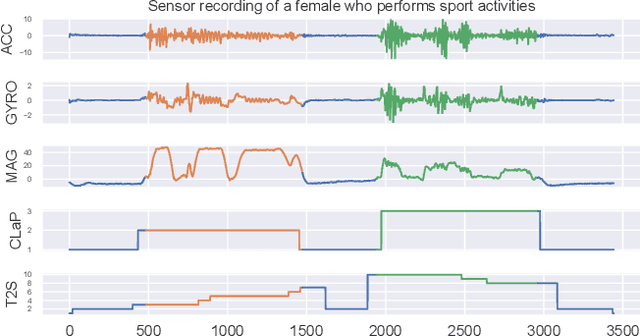

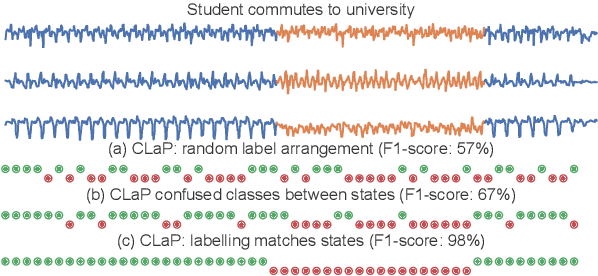
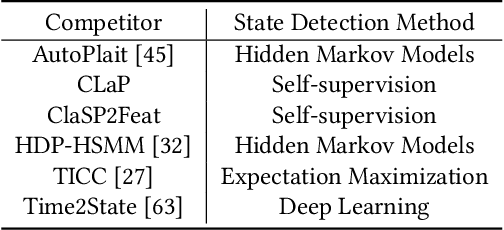
Abstract:The ever-growing amount of sensor data from machines, smart devices, and the environment leads to an abundance of high-resolution, unannotated time series (TS). These recordings encode the recognizable properties of latent states and transitions from physical phenomena that can be modelled as abstract processes. The unsupervised localization and identification of these states and their transitions is the task of time series state detection (TSSD). We introduce CLaP, a new, highly accurate and efficient algorithm for TSSD. It leverages the predictive power of time series classification for TSSD in an unsupervised setting by applying novel self-supervision techniques to detect whether data segments emerge from the same state or not. To this end, CLaP cross-validates a classifier with segment-labelled subsequences to quantify confusion between segments. It merges labels from segments with high confusion, representing the same latent state, if this leads to an increase in overall classification quality. We conducted an experimental evaluation using 391 TS from four benchmarks and found CLaP to be significantly more precise in detecting states than five state-of-the-art competitors. It achieves the best accuracy-runtime tradeoff and is scalable to large TS. We provide a Python implementation of CLaP, which can be deployed in TS analysis workflows.
Raising the ClaSS of Streaming Time Series Segmentation
Oct 31, 2023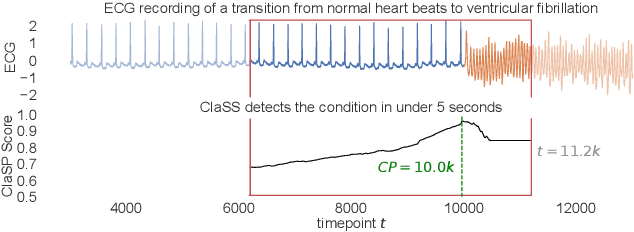


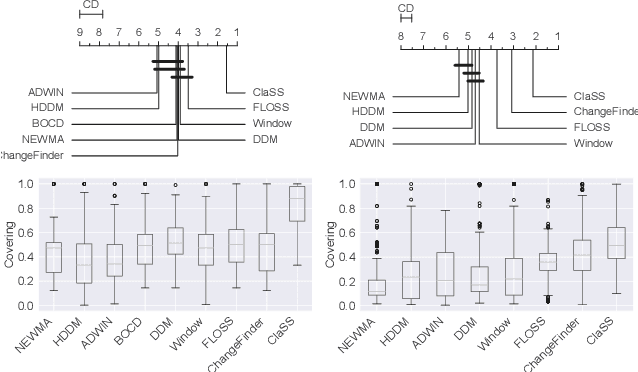
Abstract:Ubiquitous sensors today emit high frequency streams of numerical measurements that reflect properties of human, animal, industrial, commercial, and natural processes. Shifts in such processes, e.g. caused by external events or internal state changes, manifest as changes in the recorded signals. The task of streaming time series segmentation (STSS) is to partition the stream into consecutive variable-sized segments that correspond to states of the observed processes or entities. The partition operation itself must in performance be able to cope with the input frequency of the signals. We introduce ClaSS, a novel, efficient, and highly accurate algorithm for STSS. ClaSS assesses the homogeneity of potential partitions using self-supervised time series classification and applies statistical tests to detect significant change points (CPs). In our experimental evaluation using two large benchmarks and six real-world data archives, we found ClaSS to be significantly more precise than eight state-of-the-art competitors. Its space and time complexity is independent of segment sizes and linear only in the sliding window size. We also provide ClaSS as a window operator with an average throughput of 538 data points per second for the Apache Flink streaming engine.
ClaSP -- Parameter-free Time Series Segmentation
Jul 28, 2022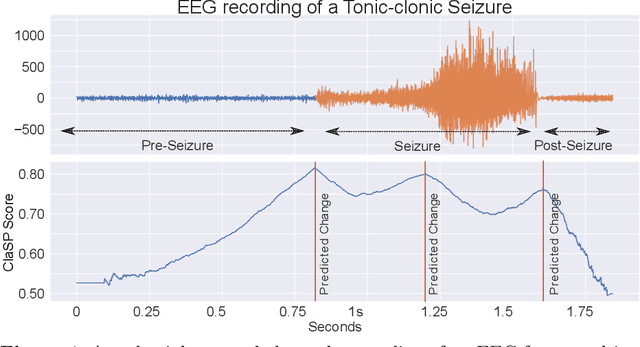

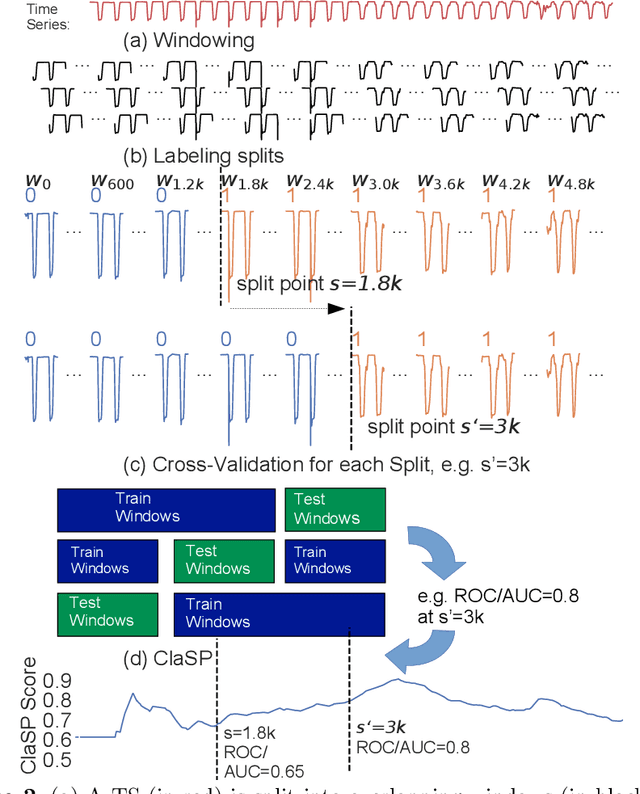
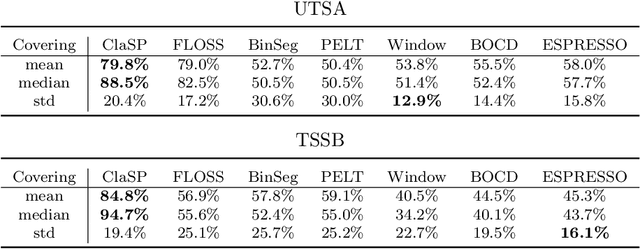
Abstract:The study of natural and human-made processes often results in long sequences of temporally-ordered values, aka time series (TS). Such processes often consist of multiple states, e.g. operating modes of a machine, such that state changes in the observed processes result in changes in the distribution of shape of the measured values. Time series segmentation (TSS) tries to find such changes in TS post-hoc to deduce changes in the data-generating process. TSS is typically approached as an unsupervised learning problem aiming at the identification of segments distinguishable by some statistical property. Current algorithms for TSS require domain-dependent hyper-parameters to be set by the user, make assumptions about the TS value distribution or the types of detectable changes which limits their applicability. Common hyperparameters are the measure of segment homogeneity and the number of change points, which are particularly hard to tune for each data set. We present ClaSP, a novel, highly accurate, hyper-parameter-free and domain-agnostic method for TSS. ClaSP hierarchically splits a TS into two parts. A change point is determined by training a binary TS classifier for each possible split point and selecting the one split that is best at identifying subsequences to be from either of the partitions. ClaSP learns its main two model-parameters from the data using two novel bespoke algorithms. In our experimental evaluation using a benchmark of 115 data sets, we show that ClaSP outperforms the state of the art in terms of accuracy and is fast and scalable. Furthermore, we highlight properties of ClaSP using several real-world case studies.
 Add to Chrome
Add to Chrome Add to Firefox
Add to Firefox Add to Edge
Add to Edge